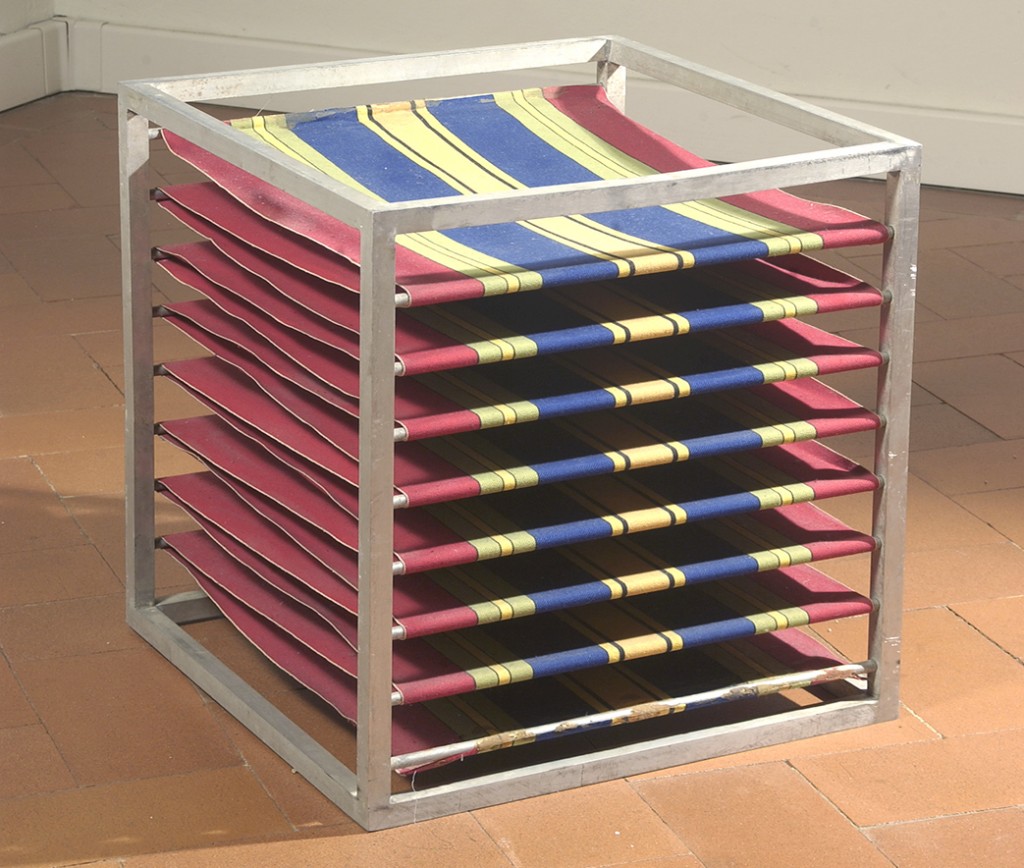After stepping into the art world as a self-taught artist, Alighiero Boetti made his debut at the Christian Stein gallery in Turin in 1967. In the same year, he joined the group of artists adhering to the Arte Povera movement and participated in the exhibit of the same name curated by Germano Celant. The 1970s were a period of frequent travels to Afghanistan for the artist, who opened a hotel called One Hotel in Kabul in 1972. Here, Boetti gave shape to his concept of art, entrusting its realisation to third parties. Beginning in the mid-1970s, he initiated an intense season of exhibitions in museums and galleries across Europe and the United States. In 1990, he was invited to the Venice Art Biennale with a personal hall; on this occasion, he was awarded the Special Jury Prize. He died in his home in Rome at Via del Teatro Pace on 24 April 1994.

– title: Zig-Zag, 1967
– date: 1967
– medium: aluminium and striped cotton fabric (blue, yellow, red, green, and black colour stripes).
– size: 50x50x50 cm
– description: A colourful striped fabric, similar to the type commonly used for lounge chairs, placed within a metal structure gives rise to Zig-Zag, 1967, one of the early 3D works produced by Alighiero Boetti. This work represents a turning point in the career of the artist, because it unveils some of the themes that would underpin his later production, such as replication as a way to express aesthetics, the use of textile, in particular the idea of weaving, and of the relationship between weft and warp. The title of this sculpture, made with industrial, every day materials, associates with the endless overlapping of the woven cloth inside the aluminium structure and the resulting optical effect. In fact, the back-and-forth rolling of the band of fabric brings to mind the movement of a loom, which can be paralleled to human thought, and the alternating rhythm of weft and warp found in the etymology of the word “texture”. It is worthwhile recalling that textus means framework or woven fabric in Latin, while its variant tectum (roof) is reminiscent of the idea of building. Therefore, looking closer, the work embodies both the primordial design of an inhabited environment and the flowing of textures and thoughts that are the result of a continuous interweaving.